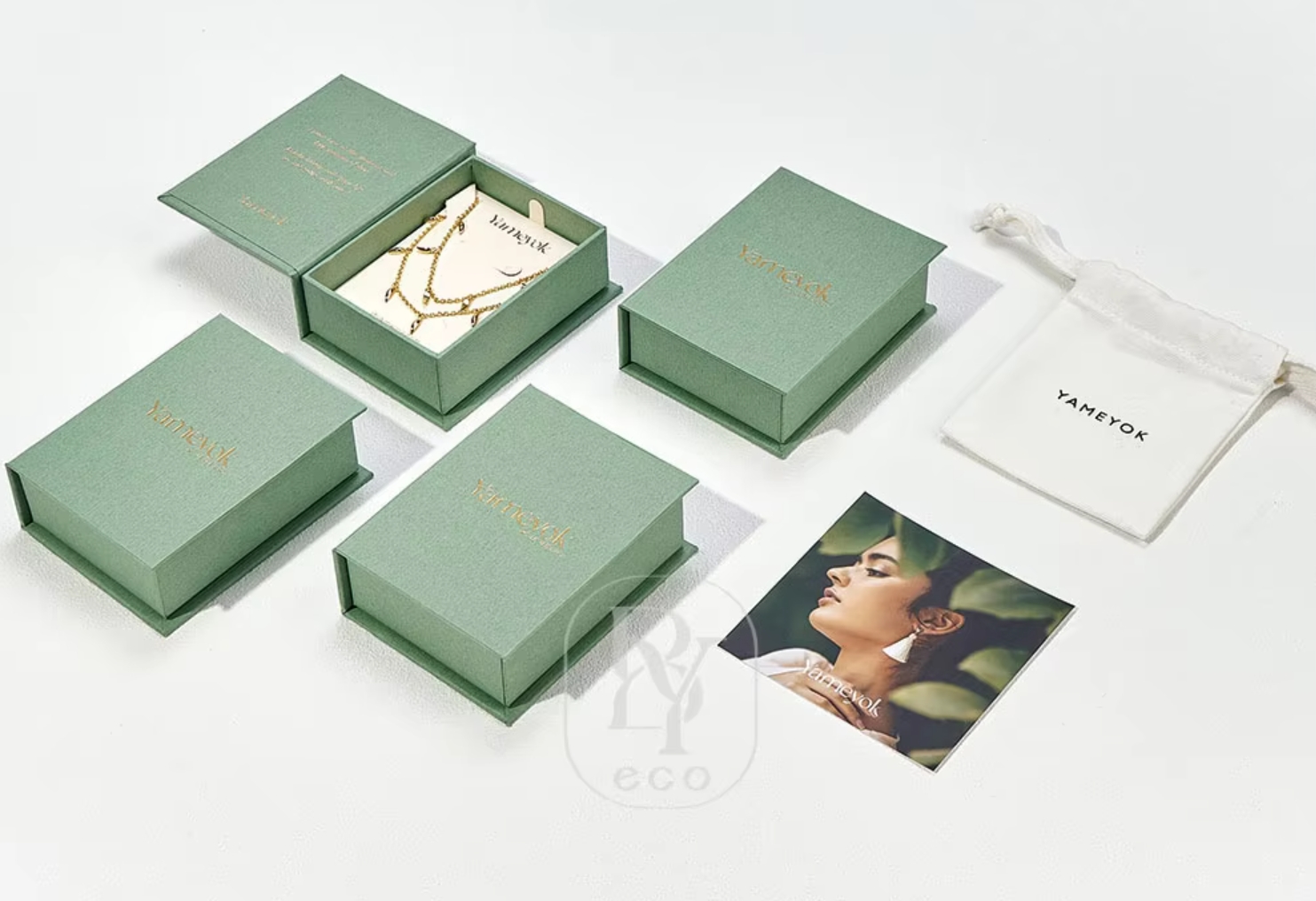You can share
- Share to Facebook
- Share to Google+
- Subscribe to our
- Share to Linkedin
- Share to Twitter

With the growing popularity of environmental awareness and shifting consumer awareness, the sustainable development of jewelry packaging boxes is becoming a core topic in the industry. In the past, many brands pursued luxury and visual impact, but now, more jewelry companies are incorporating "green design," "eco-friendly materials," and "recycling" into their brand strategies. Sustainable packaging is not just a trend; it also reflects brand responsibility and competitiveness.
Traditionally, jewelry packaging often uses leather, plastic, or composite materials to create a high-end look. However, these materials are usually difficult to decompose, and their production process also carries high carbon emissions. Now, with the advancement of global sustainable development policies, eco-friendly packaging is becoming the new standard.
More and more brands are choosing to use eco-friendly materials such as recyclable paper, plant fibers, and bamboo for jewelry packaging. These materials not only reduce the environmental burden but also showcase a natural and elegant design aesthetic through their unique textures and finishes. For example, some brands use FSC-certified paper and soy ink for printing, ensuring that the entire packaging process meets environmental standards.

Modern consumers, especially the younger generation, are more concerned with a brand's sense of social responsibility. They value not only the design of jewelry but also the values behind the product. A sustainable jewelry box can convey a brand's environmental commitment and humanistic values to consumers, becoming a vital extension of the brand's image.
This also means that the "luxury" of packaging no longer relies solely on metallic luster or heavy materials, but rather on exquisite design and craftsmanship. Simple, natural, and recyclable packaging is becoming a new aesthetic trend. For example, a minimalist paper box with a sophisticated hot-stamped logo not only reduces material waste but also creates a sense of luxury.
Achieving sustainable jewelry packaging requires more than just material selection; it also requires innovative design. Many designers are exploring "modular packaging" and "reusable structures" to ensure that packaging retains its functional value after use.
For example, some brands have introduced detachable jewelry boxes that consumers can use as storage boxes or decorative ornaments. Others have designed foldable, flat boxes to reduce shipping volume and carbon emissions. These design innovations not only extend the lifespan of packaging but also provide brands with a differentiated competitive advantage.
Digital technology is also driving the green transformation of jewelry packaging. Through smart labels or QR codes, brands can reduce the use of paper instructions, tags, and other collateral. Consumers scan the QR code on the packaging to access jewelry information, care guides, or the brand story, achieving paperless interaction.
This integration not only improves the environmental efficiency of packaging but also enhances the user experience. It transforms packaging from a disposable item into a bridge for ongoing communication between brands and consumers.
Over the next five years, sustainability in jewelry packaging will become a mainstream trend in the industry. On the one hand, environmental regulations will continue to tighten, forcing companies to optimize packaging structure and materials; on the other hand, consumer preference for green brands will further increase.
For jewelry brands, adopting sustainable packaging not only reduces costs and resource waste but also cultivates a "responsible" and "warm" brand image. This long-term value far outweighs the immediate packaging cost.
Overall, the sustainable development of jewelry packaging is no longer an option but an inevitable industry trend. From environmentally friendly materials to recyclable designs, from digital management to brand responsibility, jewelry packaging is undergoing a "green revolution." Future outstanding jewelry brands must not only make their jewelry shine, but also ensure that their packaging carries ecological value.